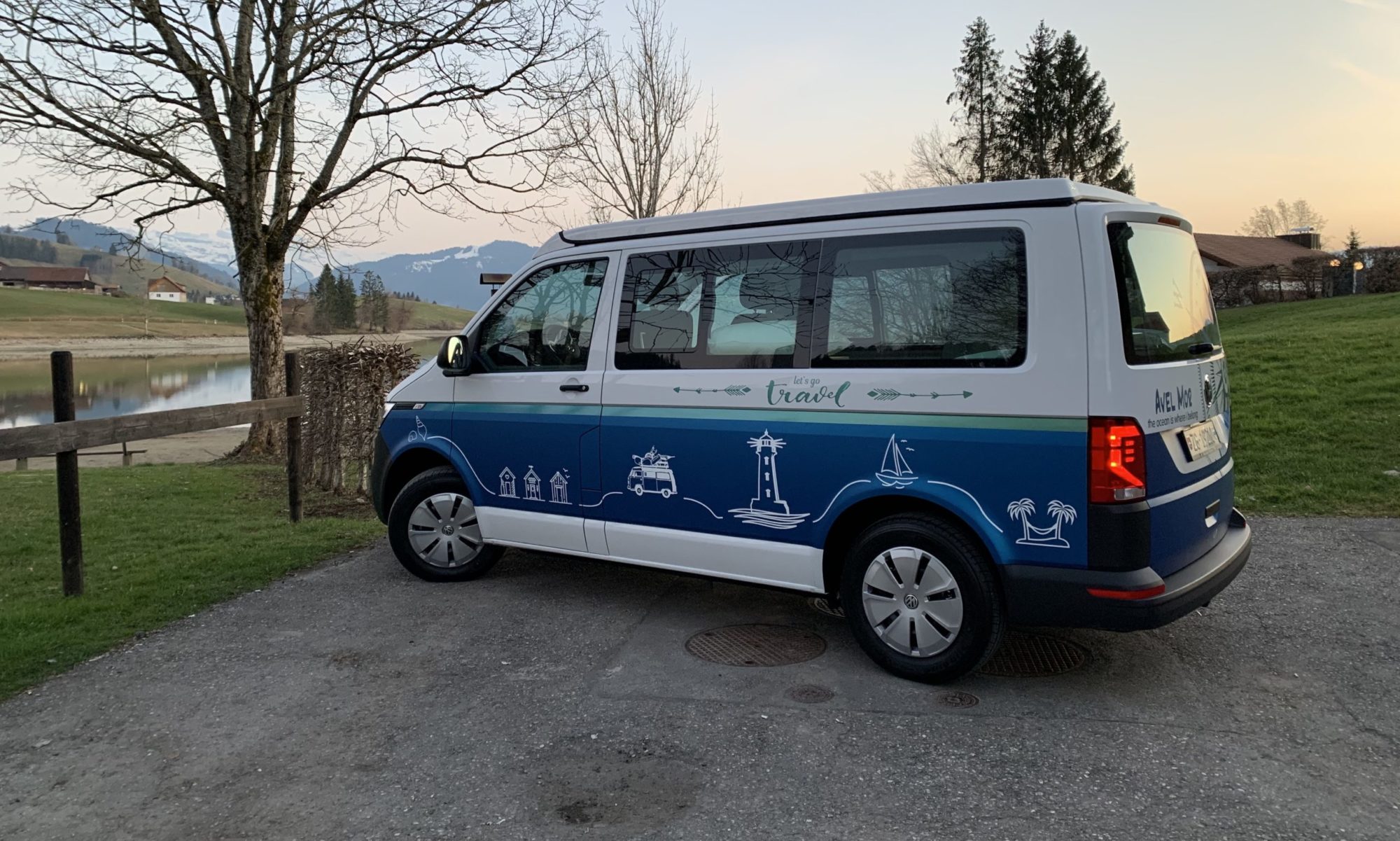It was on 1st February 2013 when we landed – at some time in the late afternoon – on Sal, one of the Cap Verde Islands. I remember it so well, as it was the day after Brigit’s birthday – a birthday night we had spent in the Radisson Blue Hotel at Zurich Airport. The hotel staff had brought a nice little cake to Brigit’s room. It had all been extremely special.
We were on our trip to Abéné in the Casamance region of Sénégal. We had booked a Condor flight from Frankfurt, but our flight from Zurich to Frankfurt left Zurich at 7h00. In order to be able to be there on time, we had wanted to spend the night in the Airport Transit Hotel Rooms, which you can book, but you’ve to be checked in, because you are literally sleeping within the transit zone. After getting up you only have to walk to your gate and board your flight. In 2013, evening check-in was still provided by many airlines.
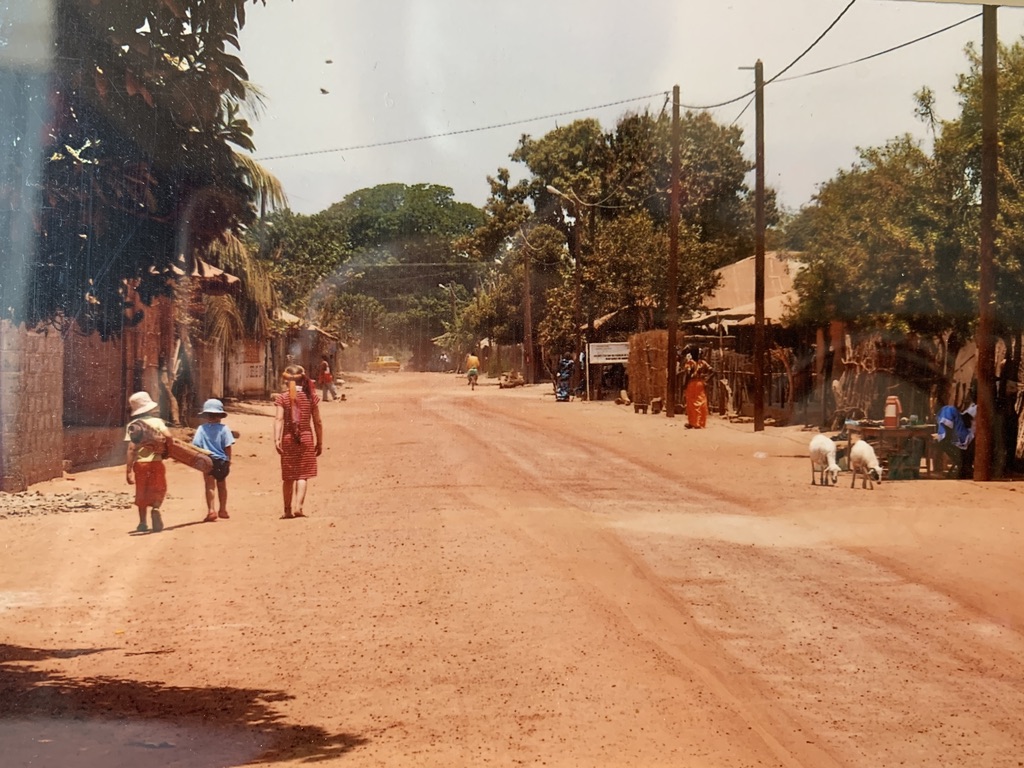
But then Brigit, who had booked the rooms for us, got a call from Canada Air. A Canada Air plane had returned to Zurich and there were passengers without visa to Switzerland who had to stay overnight in Zurich. So, they asked us to leave our cheap transit rooms to these passengers and payed for the five star Radisson Blue nearby, instead. That’s how we had come to stay in that hotel.
It had been a horrible night – as I had hallucinations deriving from the anti-malaria prophylaxis medication Lariam. But at that time, I did not know it yet. I was just lying in my bed all night having the worst, unspeakable fears. All the rooms’ large window panes were facing down into the Radisson Hotel dining court. There were walls of wine bottles and the waiters and waitresses had to literally climb up to get one of the more special wines.
All this glass around me reminded me of the World Trade Center that had been subject to terrorism not even two years before. I suddenly needed to find the fire escape stairs, but that did not help much. While my little boys, eight and ten years old then, were sleeping peacefully I was having one of the worst nights of my life!
We boarded, flew to Frankfurt, changed flights and when sitting in the plane I only saw this tunnel without end, so it seemed. Dürrenmatt’s short story “The Tunnel” came to my mind where the protagonist is sitting in a train looking out of the window when the train enters a tunnel. First, he does not notice anything while looking at other travelers as there was nothing special about that tunnel, but then the tunnel does not end, not after a while, not after a long, or even very long while. The ordinary tunnel has just turned into an endless tunnel. The protagonist then notices that the tunnel seems to lead deeper and deeper into the ground and wonders if it was actually leading to hell – I cannot recall the outcome of the story. I think it somehow stops, but he never gets out of the tunnel.
So my plane felt like a tunnel, an endless tunnel. And when we had taken off from Sal and flew over the 40 minutes to Banjul, the capital of The Gambia, I was fearing we would land in the swamps … I was soaked when we stepped into the sand loaded, warm night in Africa – only to start scaring that I would suffocate from the sand in the air, hardly able to breathe. Only when my boys were lying peacefully at rest under the mosquito net in the hotel in Banjul and I was – again – lying wide awake in the night, and only when there was this hot shiver going down my spine, I suddenly realised that it must all have been the side-effects of the malaria medication. I stopped taking them and the mental agony also stopped a few days later.
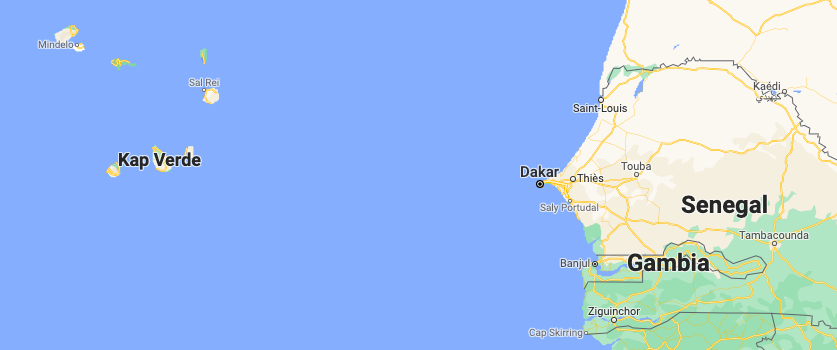
Sal is probably the most touristy of all the Cap Verde Islands. Sandy beaches, surfers, kite-surfers hotspot, all inclusive. I remember a flat, sandy island in pale evening light. We had stopped there for about an hour, refilled gasoline. The passengers leaving us – actually most of them – who wanted to go to The Gambia? – had to walk over the sand-dusted runway towards the small, flat airport building.
It had been some time later that this picture sprang up again in my mind – the Cap Verde Islands are almost located on the same level as The Gambia and southern Sénégal – yet, being isolated out there in the ocean there are no major illnesses to be feared, no malaria, no dengue, no sleep-illness or yellow-fever. It seemed to be Africa without the hazards of Africa – the only backlash being that people spoke Portuguese, as the Cap Verde Islands used to be a Portuguese colony. That had been the moment when I started thinking of visiting the islands. But cheap charter flights went there midweek or on Monday, making it impossible for me to stay longer than a week in the cold winter season – as a teacher I normally have to conform to school holidays. So, my sabbatical was the moment to grasp the chance and fly there for a good three weeks. But then came corona and made planning unforeseeably difficult. And then my fellow teacher fell ill – I was asked to step in, help out and organise short – and later long-term substitutes. Plans crumbled.
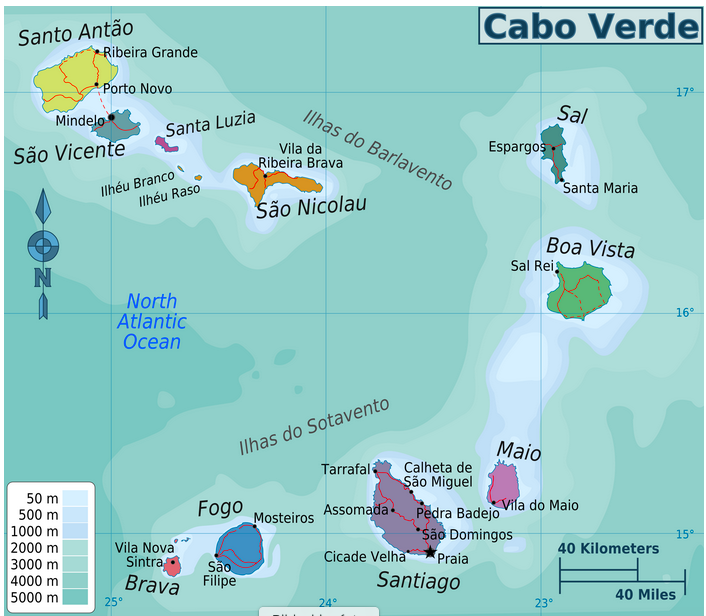
Luckily my headmaster allowed me to make up for it and so here I am, flying to São Vicente, one of the Cap Verde Islands, writing my travel blog again – in English of course!
The landing is spectacular – we go down way out on the ocean only to hit the ground almost right after the shore! And there it is – a small building, resembling a factory shed, the Césaria Evora International Airport of São Vicente. I’ll get through passport check rather quickly – even though Cap Verde takes it seriously. Yet, nothing compared to getting into Namibia! A first taste of the late afternoon temperature – summer!
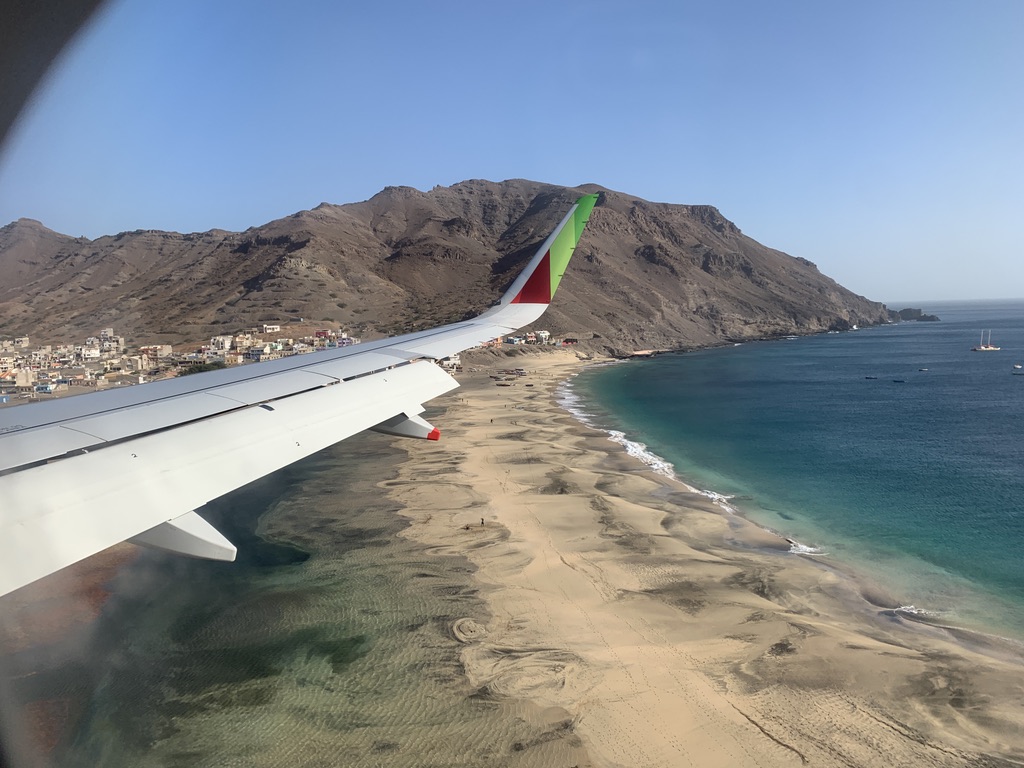
Lots of taxis and pick-ups are waiting for travelers outside the airport building and one after the other finds its visitors to the island – except for me. There I am, sitting alone on the curb waiting for my pick-up guy to come. The airport staff is departing, the security guys as well, the airport falls into a sleepy mood, the lonely TAP airplane standing next to the runway. What a sight!
Only the statue of Césaria Evora is greeting me. I’m able to call my travel agency by whatsapp (connection within the airport astonishingly fine) and after another half an hour waiting or so, someone picks me up, at last.

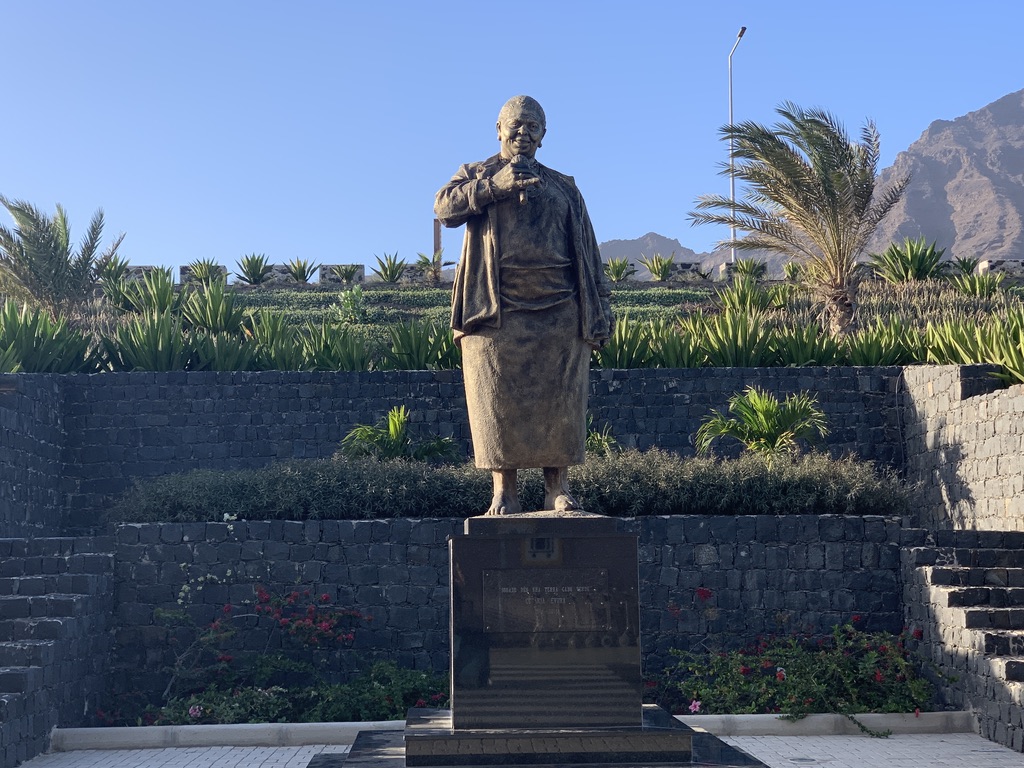
One thing I’ve already noticed are the stray dogs – there are a lot of them. No stray cats, though, not a single.
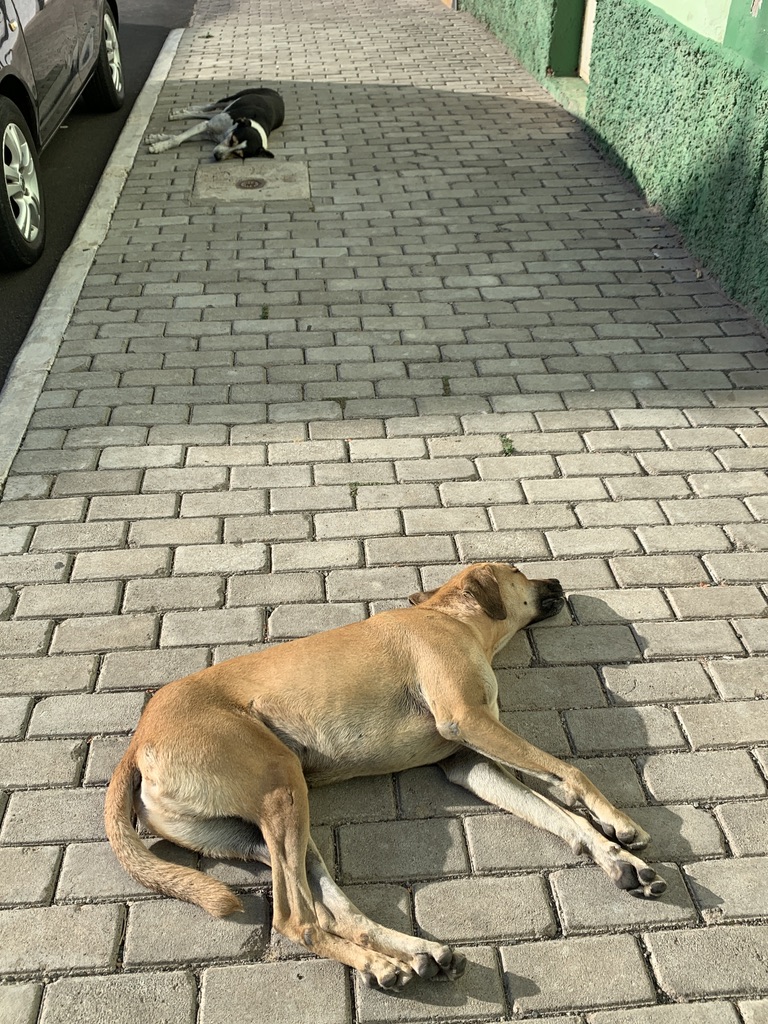
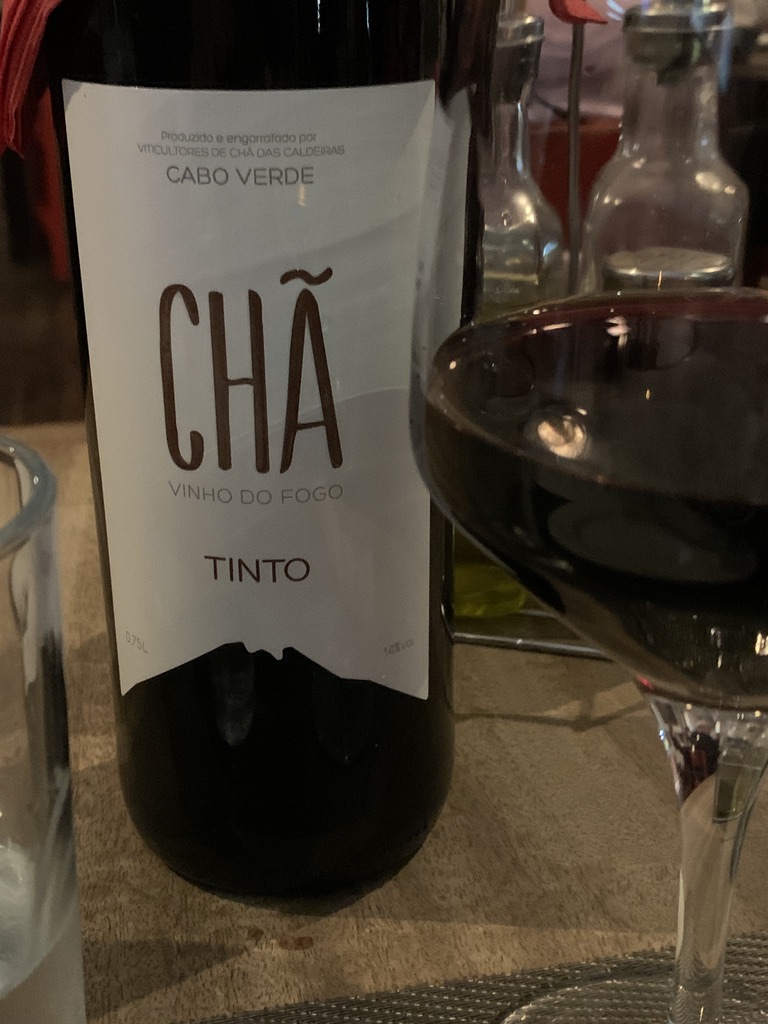
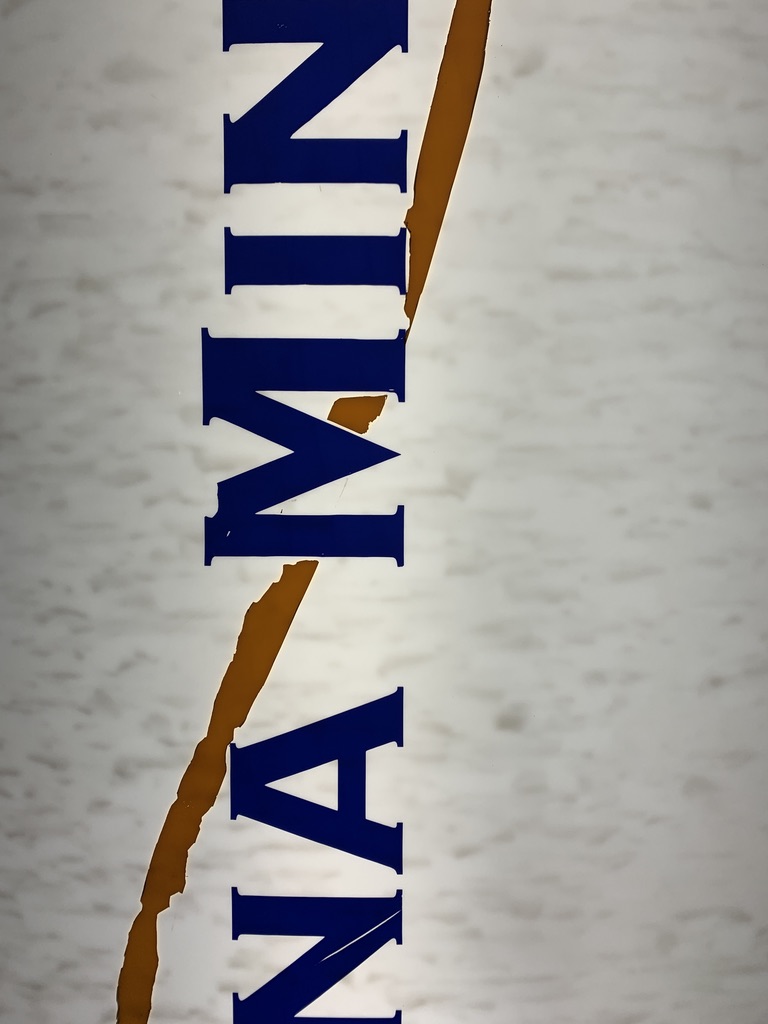
The air is hot and humid – I’m close to the equator. Sunset is fast, within 20 minutes it’s dark. From my hotel I hurry to the seafront and take a few pictures – beautiful! I don’t know yet what it feels like, but it’s something between colourful African vibrant life and European organisation with a touch of Caribbean feeling.
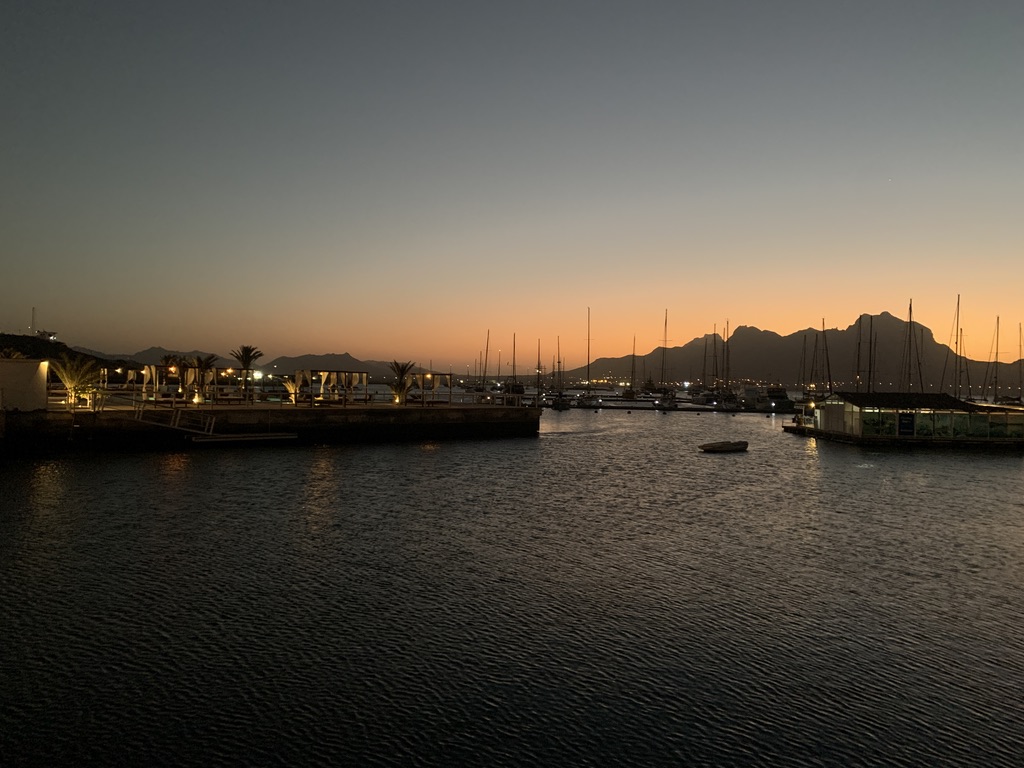
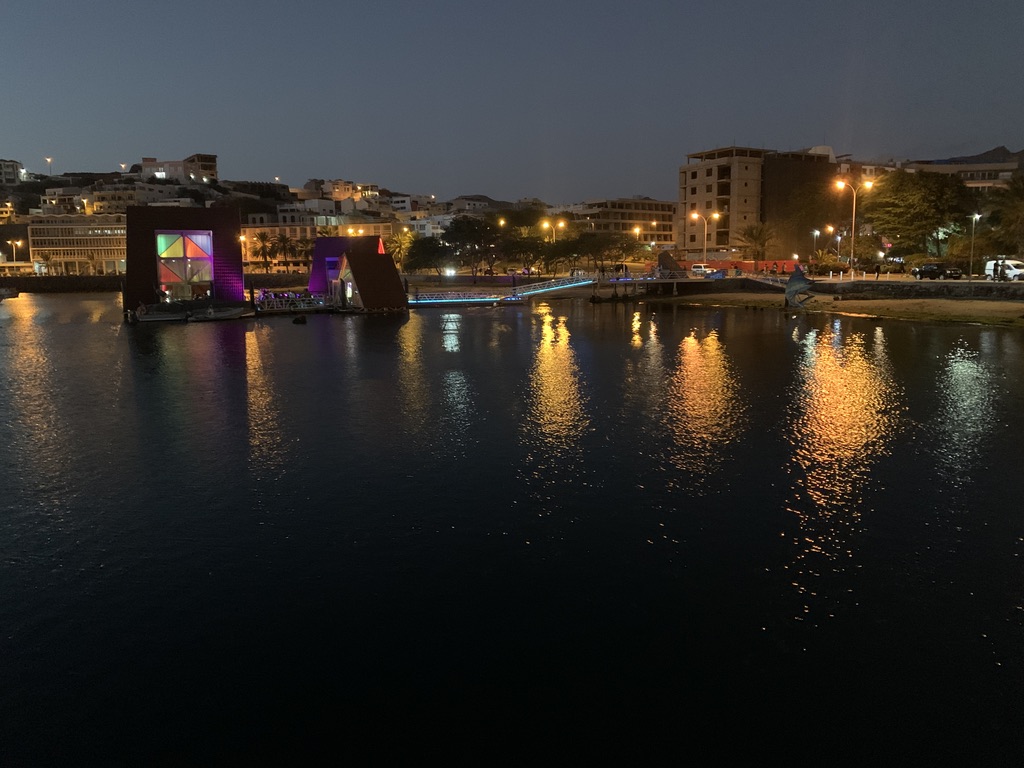

Here I am two hours behind middle European time zone – I clear up my luggage before I go to the nearby Casa Café Mindelo – the waiter is extremely nice, the food fine (tuna fish skewers), the wine (local, form the volcano island of Fogo) delicious. On top there is live music, great, I’m loving it. A European lady is all and about dancing to the music. She tries to encourage other guests, who are a bit more reluctant. But it’s a nice evening – and only a few steps from my hotel. I sleep well and wake up at 4 o’clock, quite naturally, as it is 6 o’clock in Switzerland right now.
So, I’ve to wait for 3 hours yet until I can get breakfast. Some people next door move out, a taxi has pulled up in front of the hotel. They’re probably going to the airport – I imagine the little shed full of sudden life and the TAP flight back to Lisbon.
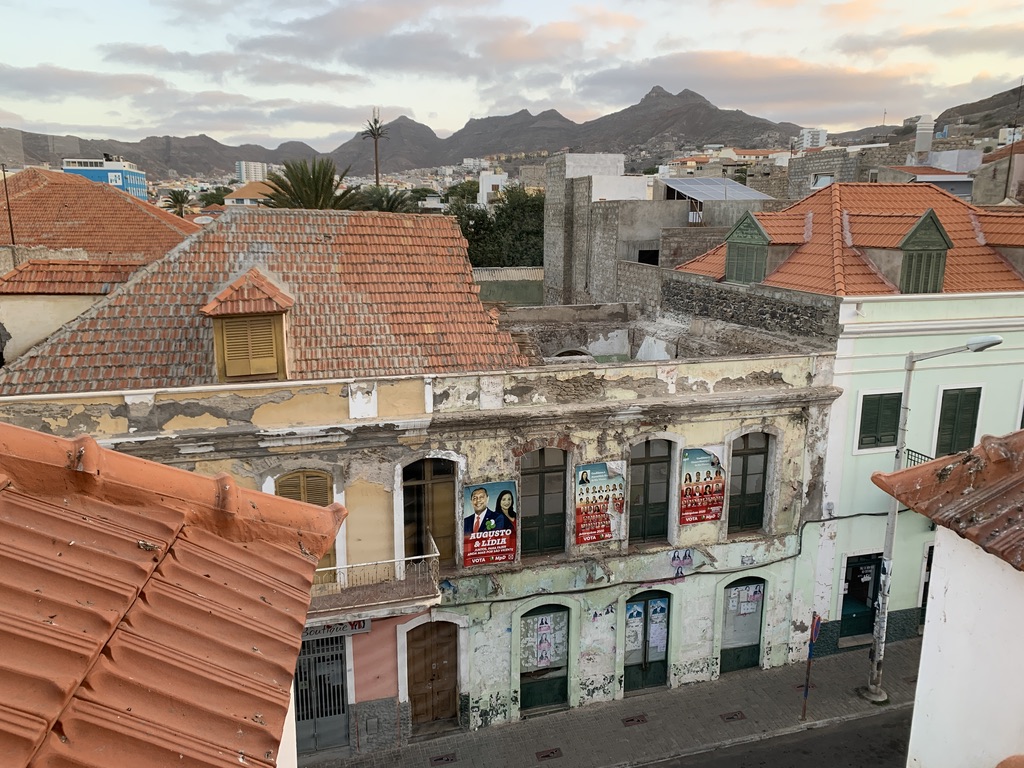


After breakfast I set out to explore Mindelo. I follow my guidebook and head east up the hill to the Fortim – the remains of an old fort, the view from up there is supposed to be nice. When I turn into the road that is leading up the hill there is a man in a light-blue jacket sitting on a narrow stone-wall. I wander up, astonished about the niceness of the buildings. This must be a rather well-off area of Mindelo. When I arrived at the outcrop (the view is truly nice) I have a notion that this guy has actually followed me up the hill. I hide behind a parked car and then, seemingly casual, walk back down, past the guy. I try to speed up without getting him noticed, yet I soon realise that he IS actually following me. All alarms are on by now and I speed up even more trying to get to an area where there are more people. I pass a building site (there are builders) and get down to the seafront (where there are a lot of people). I feel safer now, yet, the man is still following me. Being a bit overweight, he has taken off his jacket, sweating, as I’ve sped up even more.
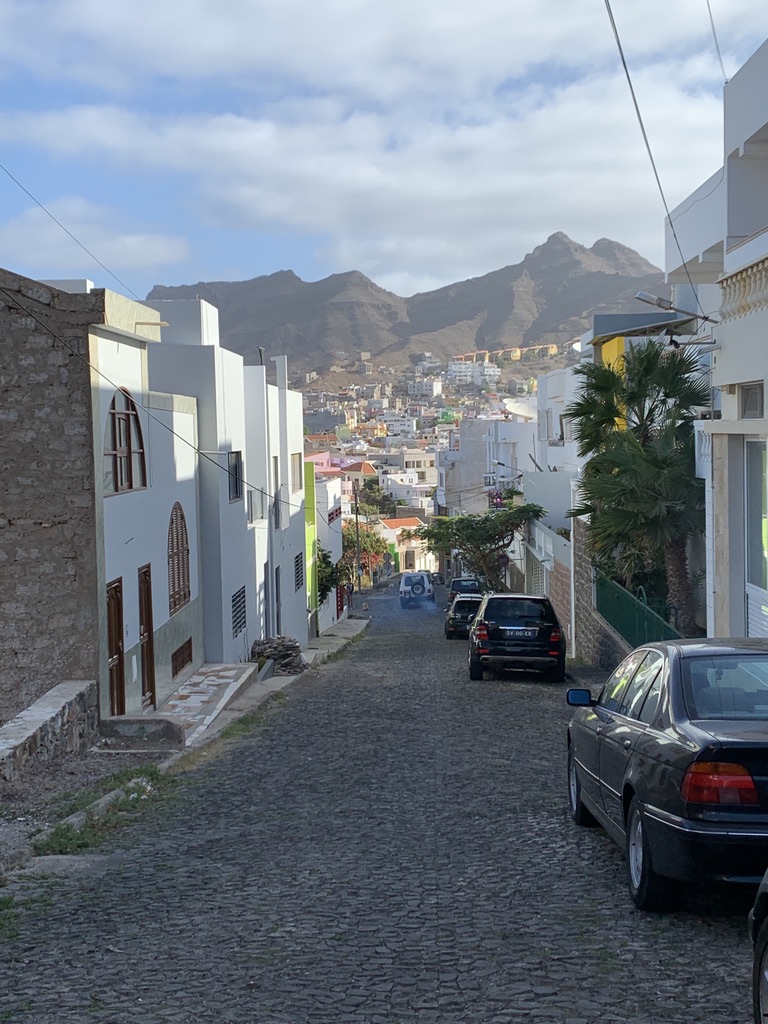
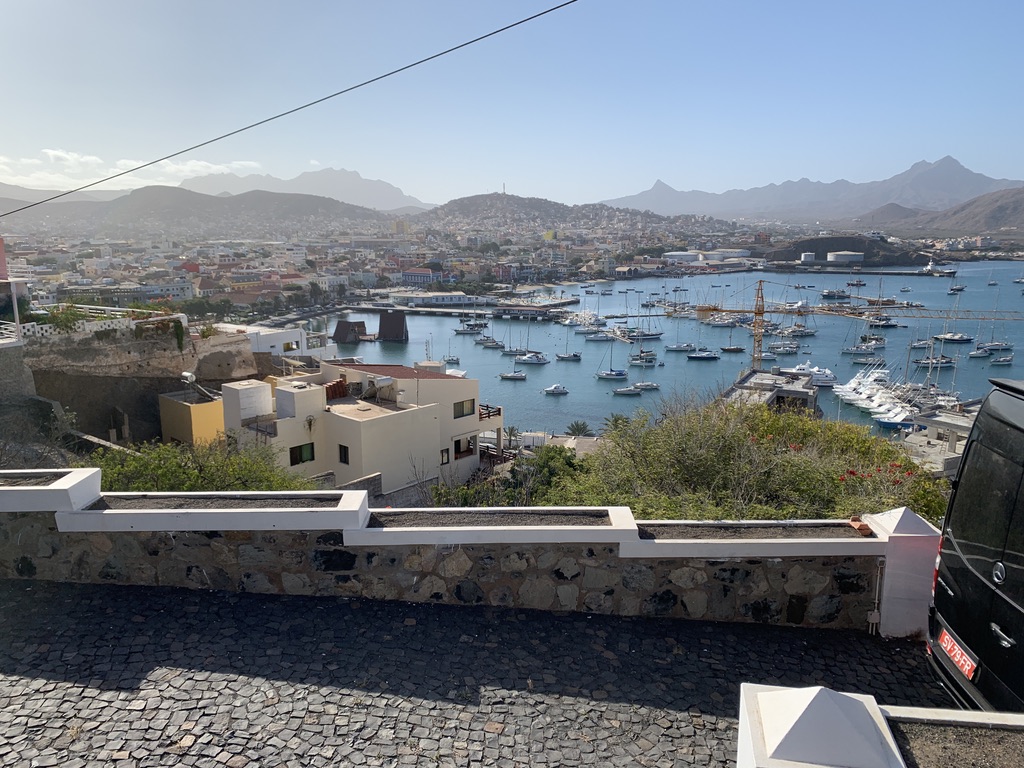
At one moment I cross the road – I want to see whether he’s doing the same – positive. I cross it a second time and head into last night’s restaurant telling the waitress about the stranger following me. Awardrobe of a Canadian sailor is standing at the counter picking up what I’m saying. He offers to accompany me where ever I want– as he has time – he says. Andrew came over from Vancouver about 3 weeks ago and will sail a ship back to Southern America. Now, he’s just having a few good days here in Mindelo – he smokes like hell (not only cigarettes), has already made tons of friends, but as a bodyguard that guy will do!!! My uninvited follower is still sitting in front of Casa Café Mindelo. And – he follows US down to the market.
Some women are selling vegetables, and lots of Senegalese people trying to sell those typical Western Africa souvenirs: trousers, shirts, chains, wooden carvings – I’ve seen it all back then in the late 90ties when I spent so much time in Western Africa.
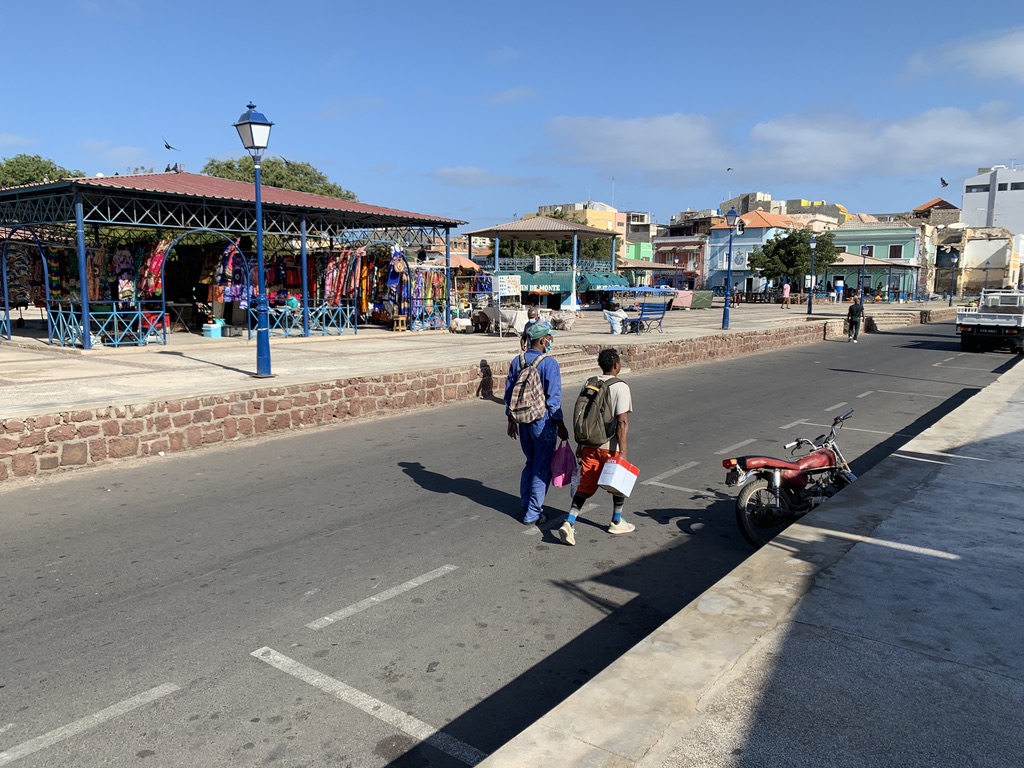
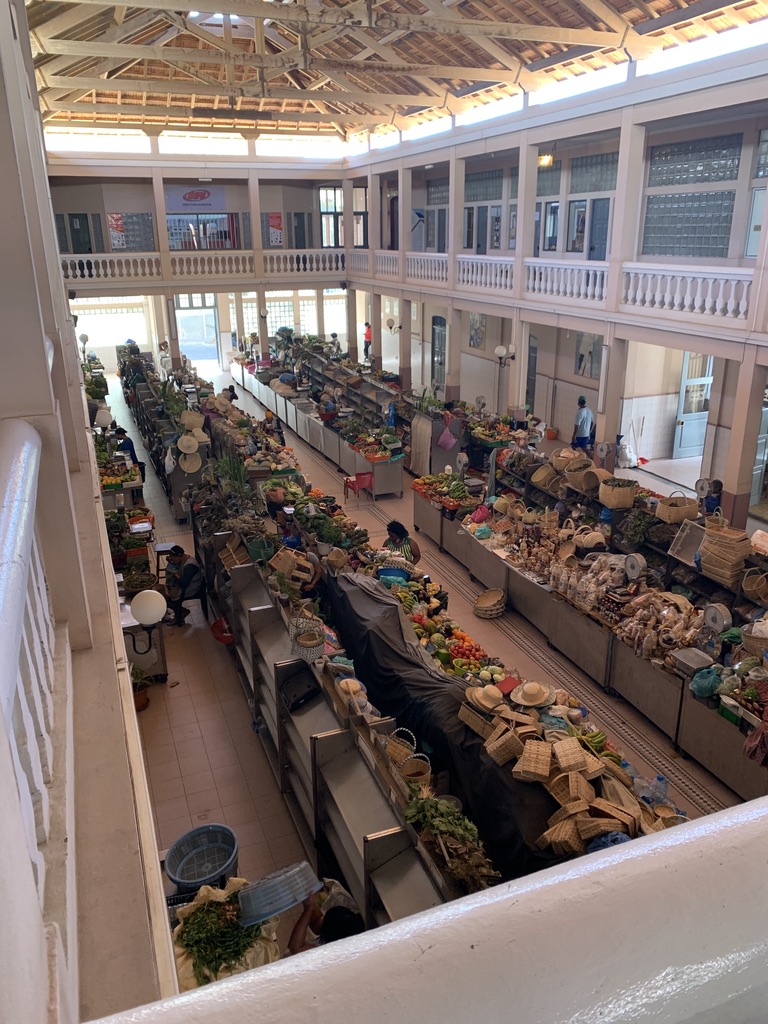
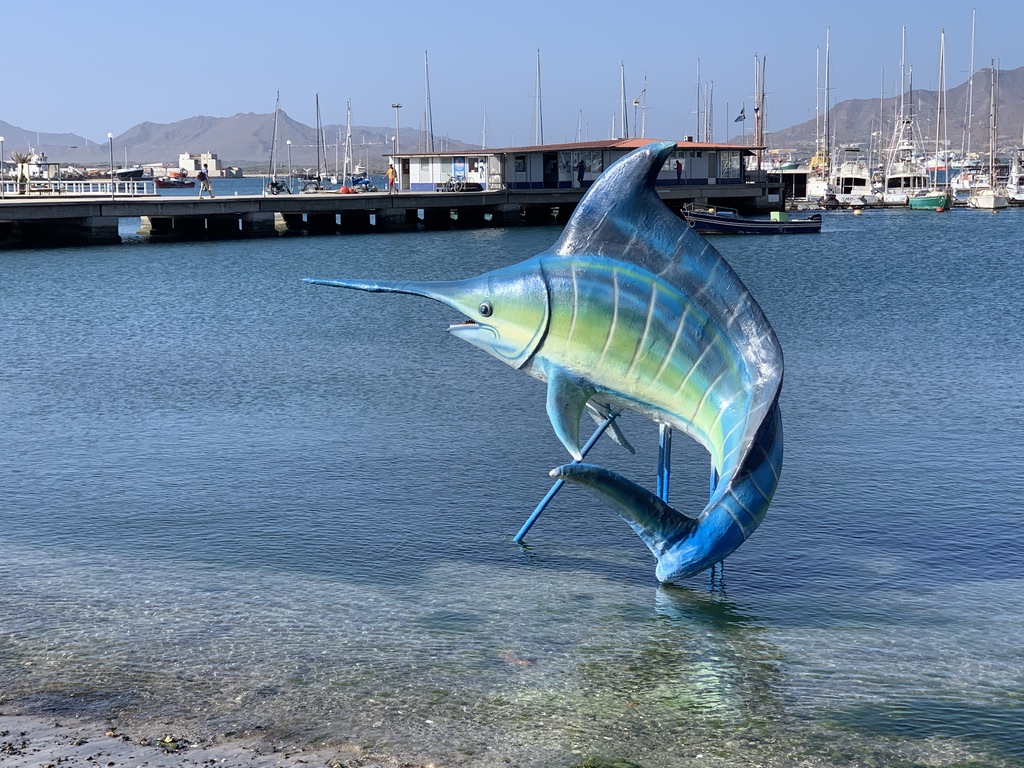
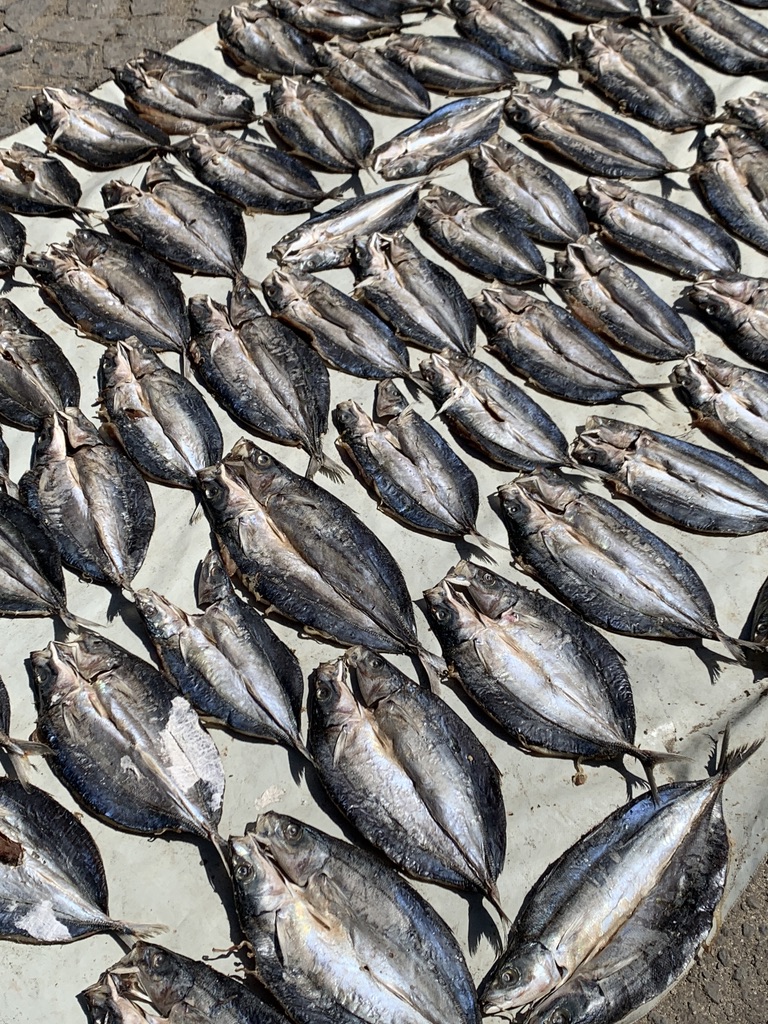
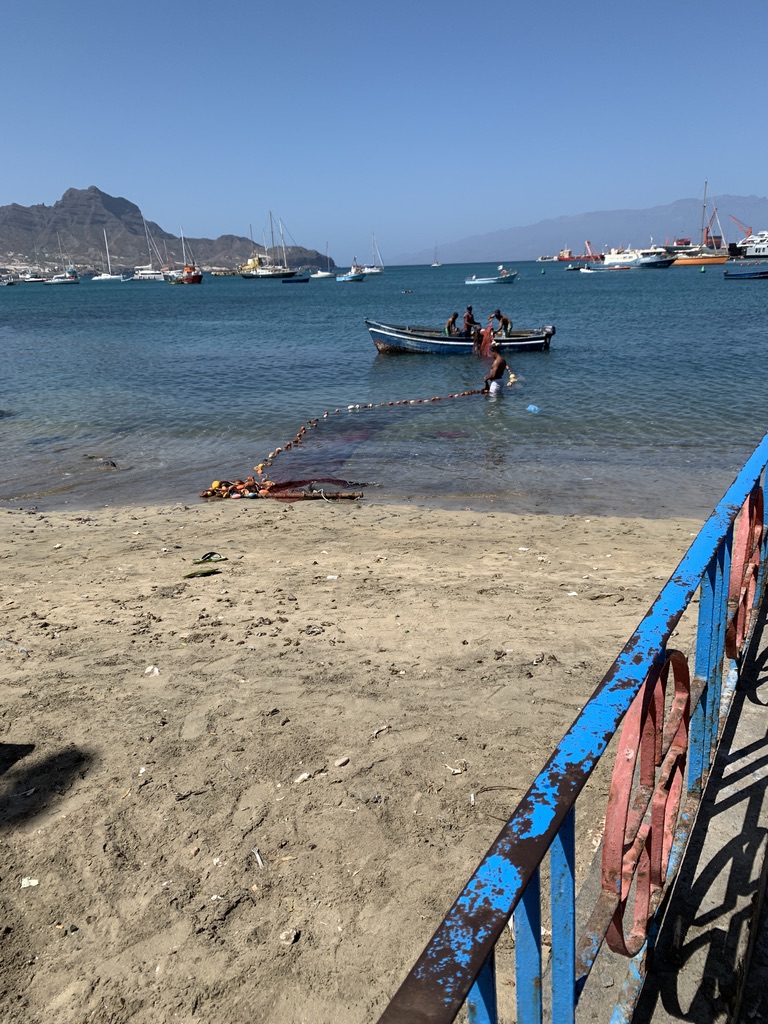
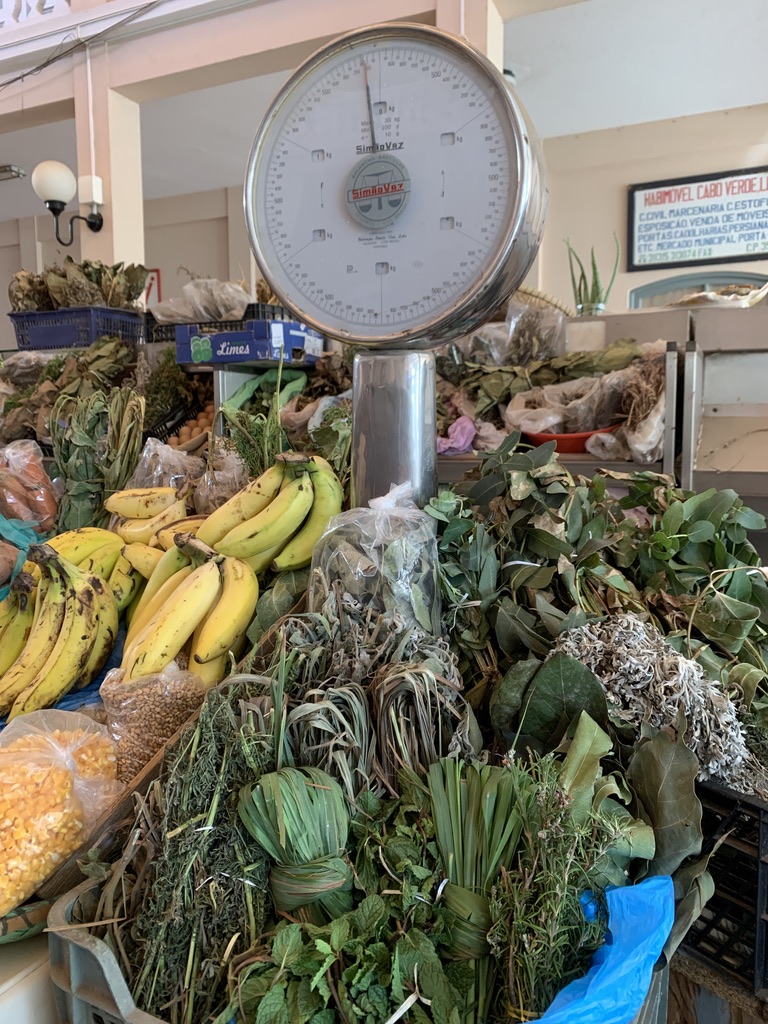
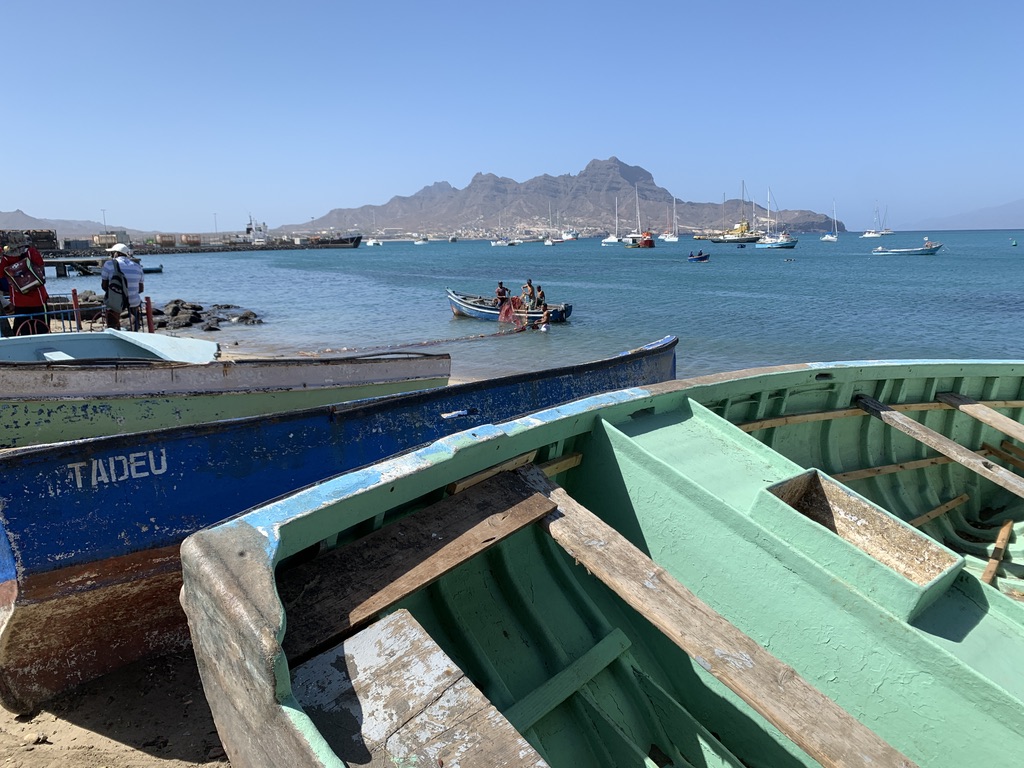
At the market we learn, though, that this guy is a lunatic and obviously had caused similar problems before. We even approach him, but he doesn’t answer. When we stop a taxi and pretend to leave or call the police he finally lets off.
I’ve never experienced a similar situation on any of my trips. I invite Andrew for a coffee and later go down to the market again.
There are a few very beautiful colonial buildings in Mindelo. Some of them are nicely done up, a lot of them are completely run down. Mindelo is situated at the rim of a crater, the crater forming a natural harbour. When steam engines replaced wind craft on ships more and more the Brits seized Mindelo’s potential and made it into a huge refueling place for ships crossing over from Europe to the Americas. Coal was brought from Cardiff/Wales, and many ship chandlers set up business here at Mindelo’s heyday. Those wonderful houses go back to this time, the late 19th century. When liquid fuel replaced coal Mindelo became unimportant and fell back to the sleepiness of an island far off the shores of Europe.
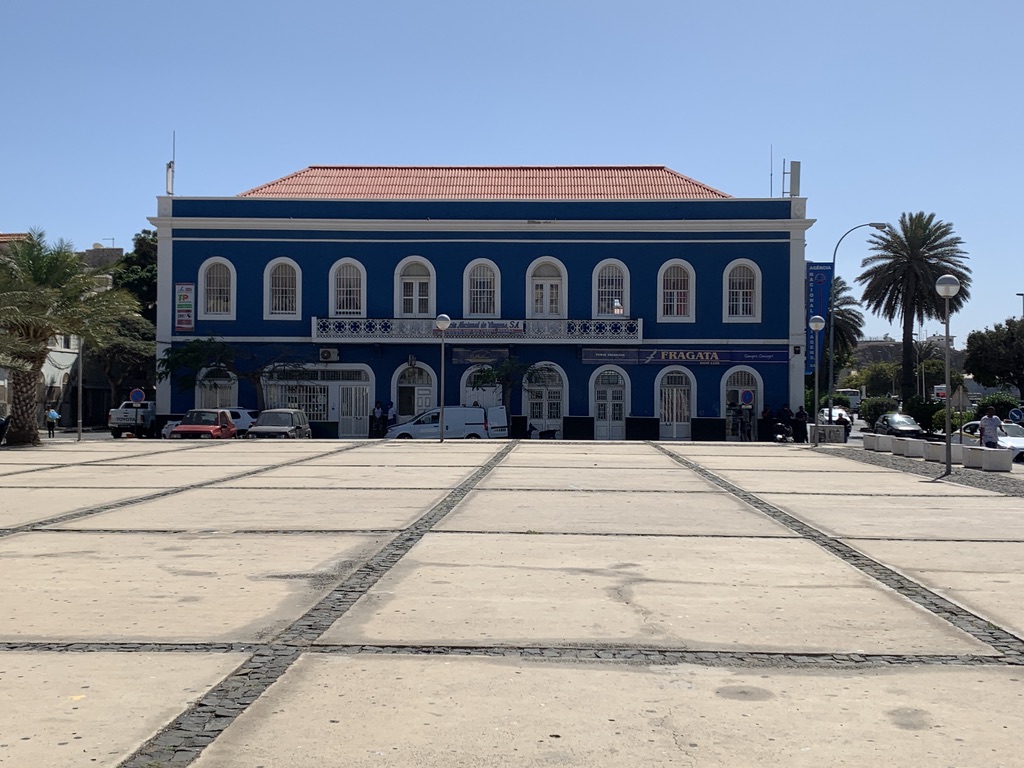
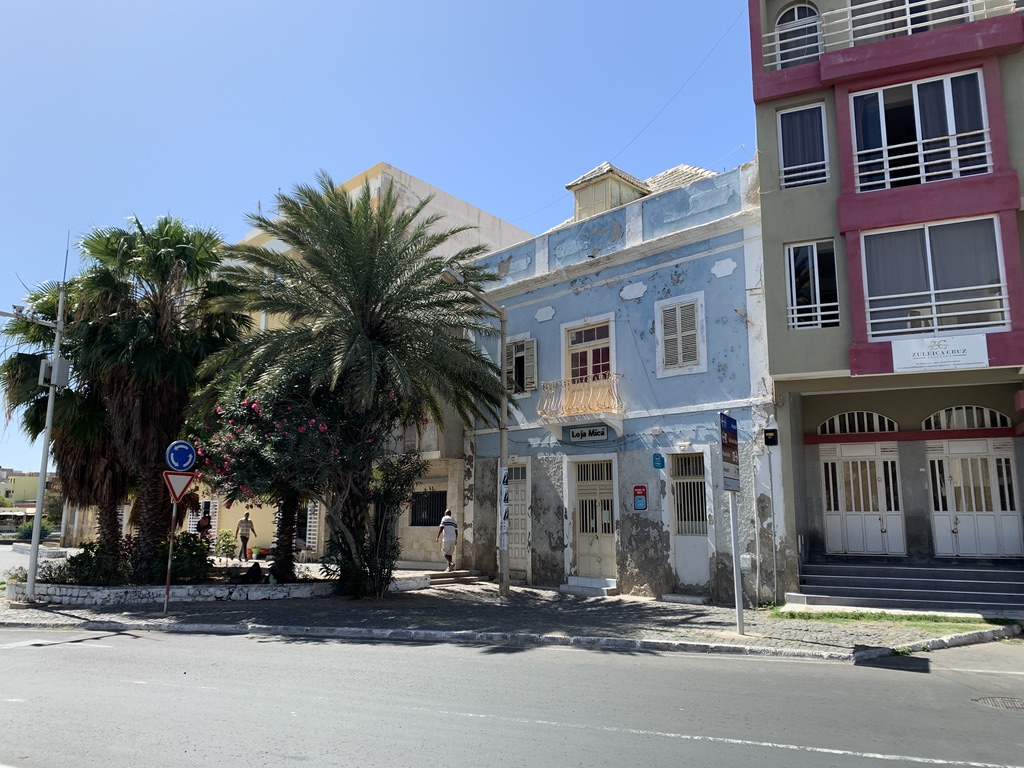
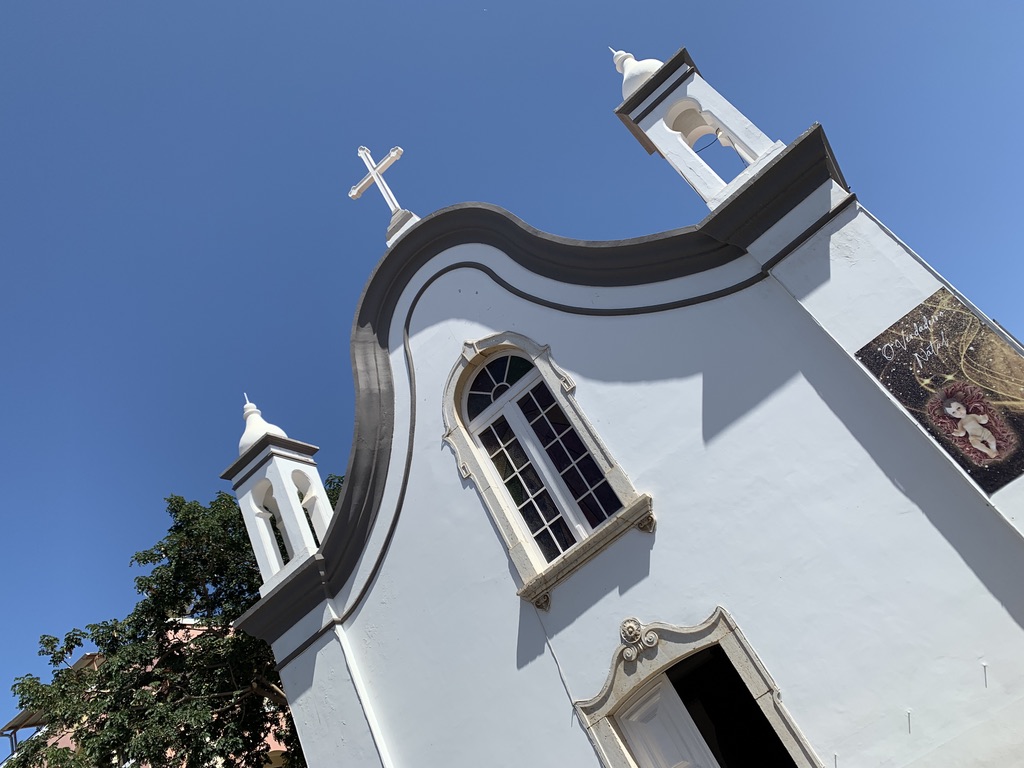
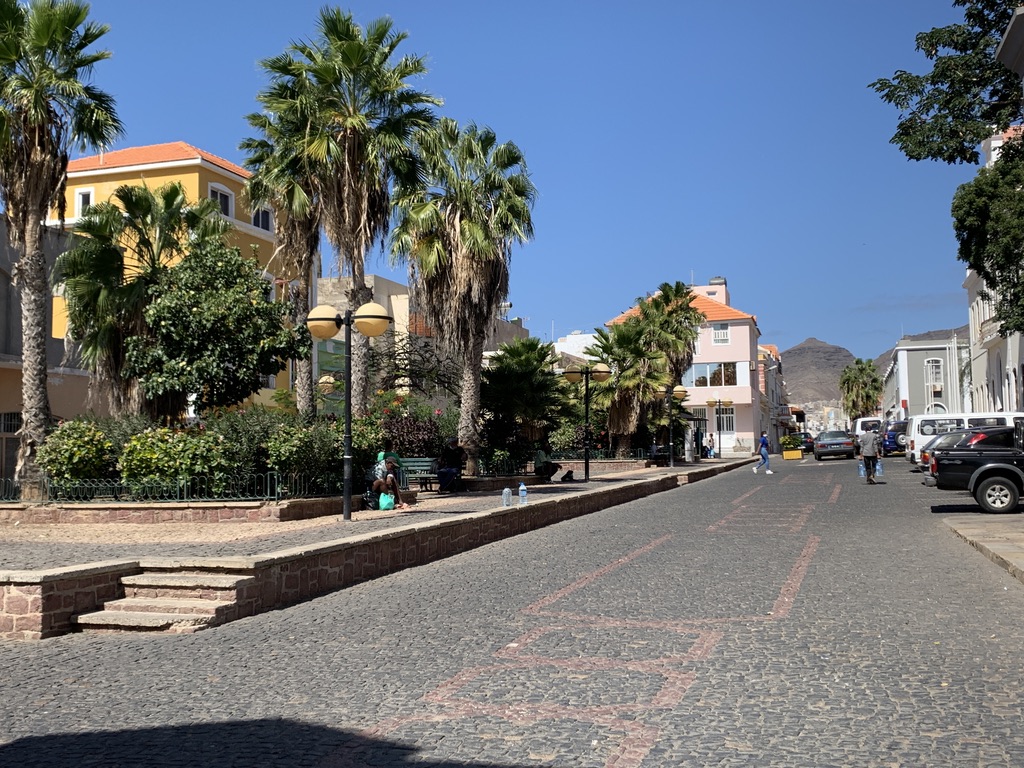
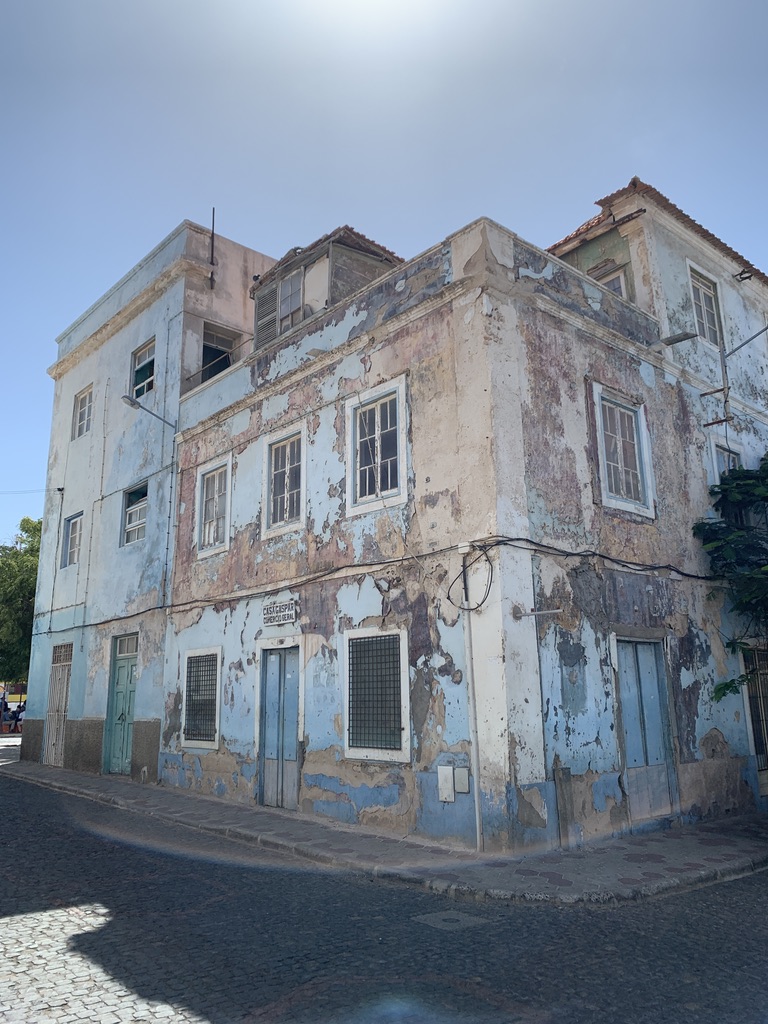
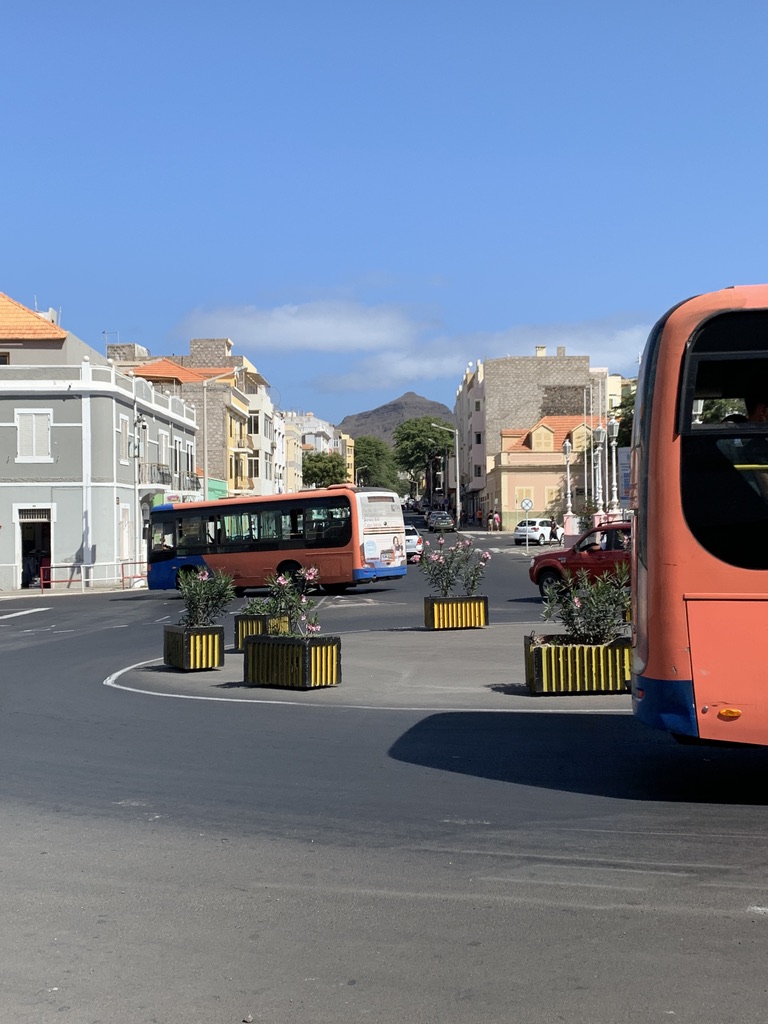
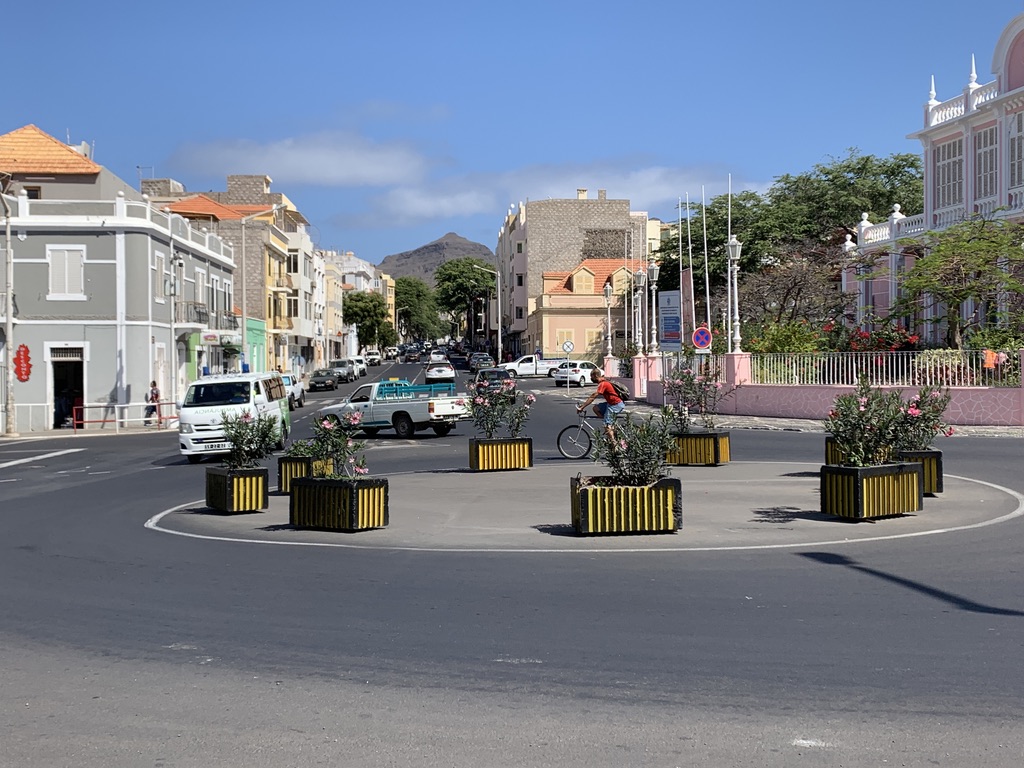
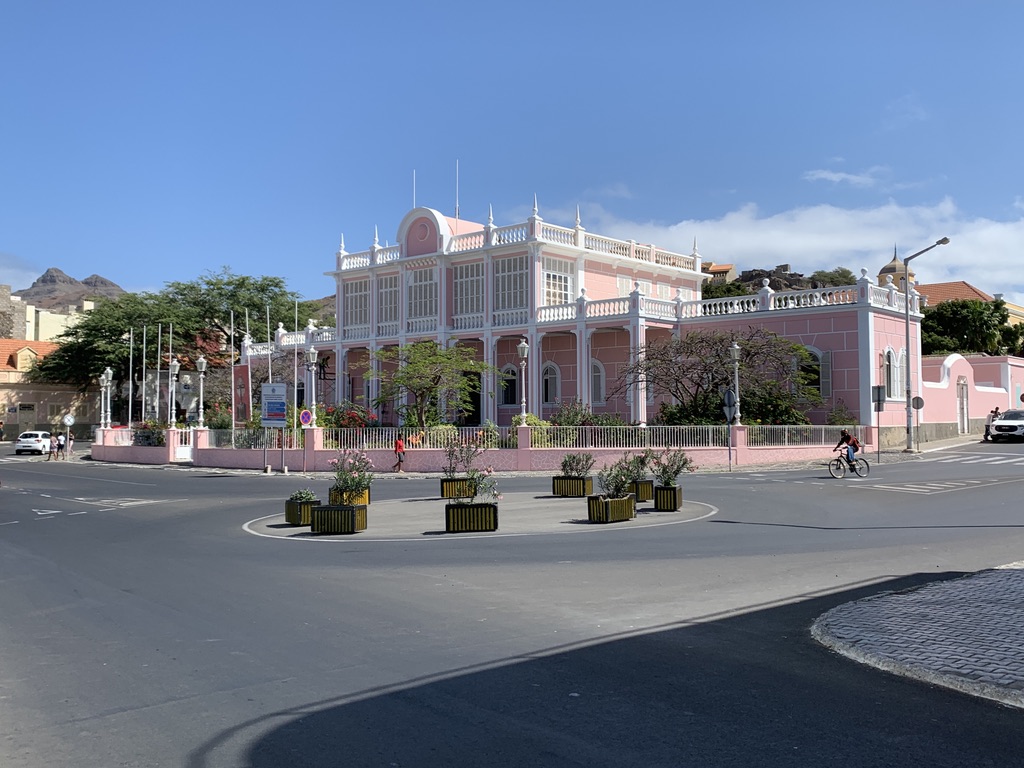
And there was Césaria Evora, la grande dame do Sodade, Morna, this kind of sad, melancholic music that is so famous for the Cap Verde Islands, similar to Portuguese fado. She used to sing in the bars of Mindelo and that’s where she is still highly honoured.
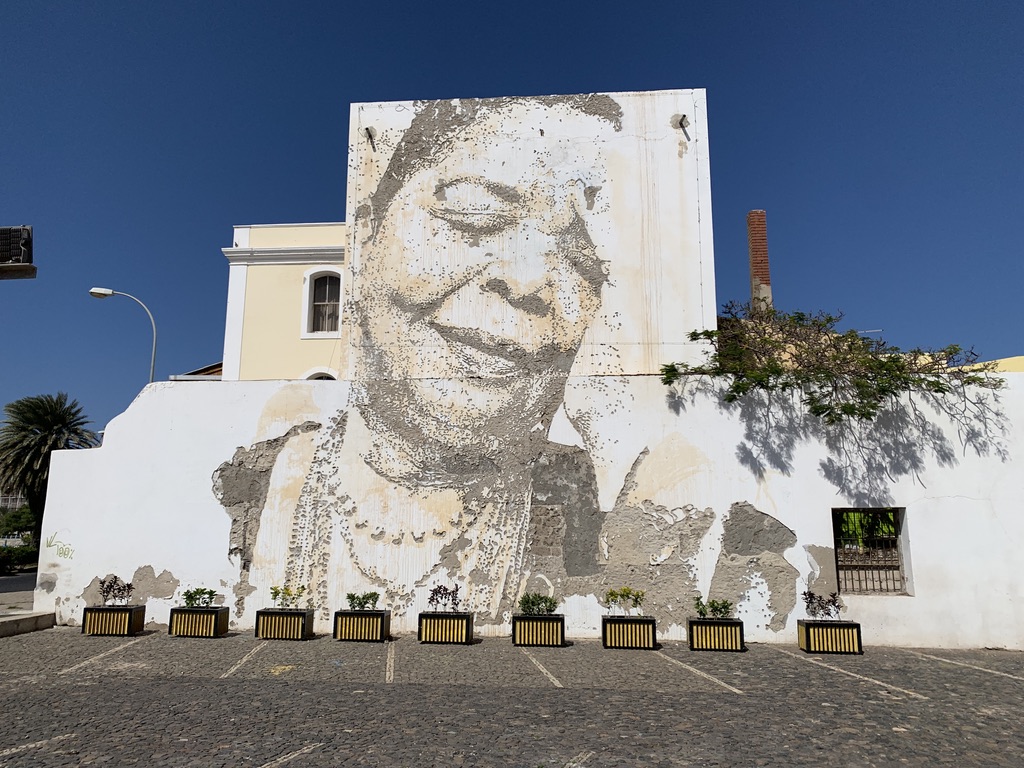
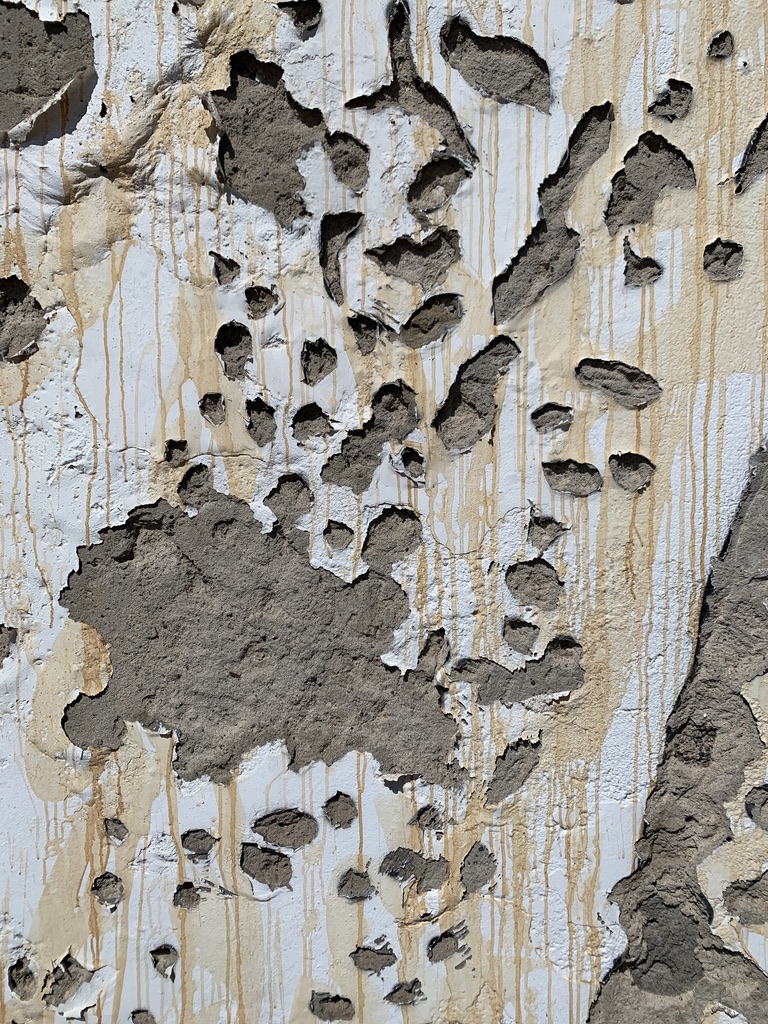
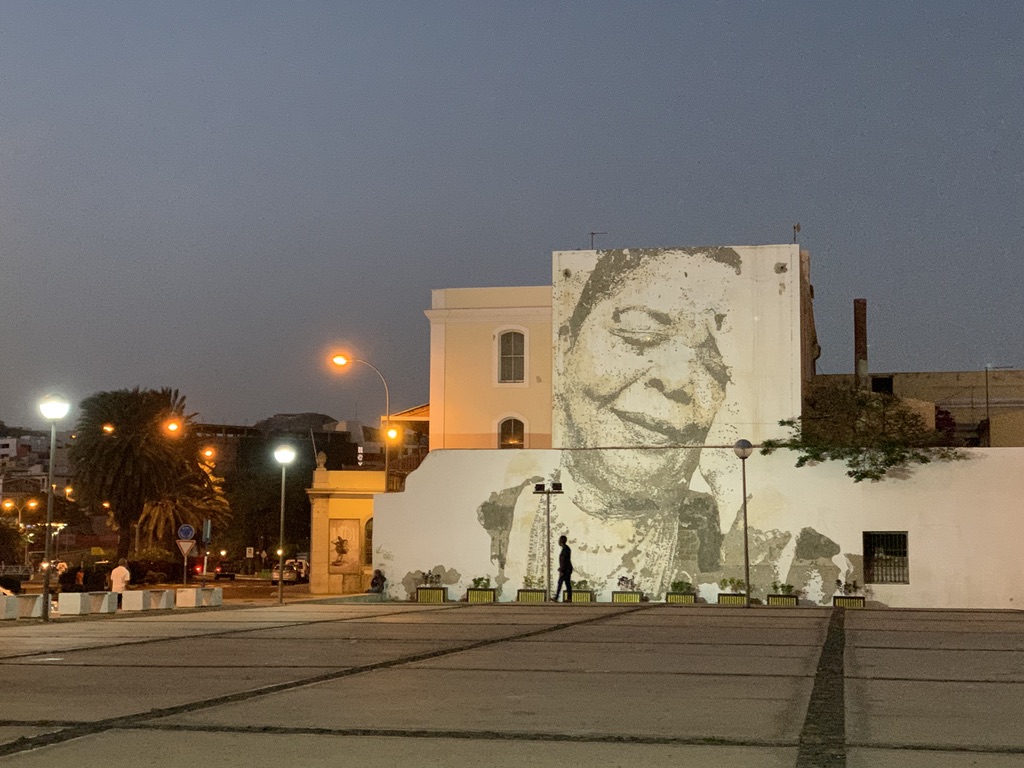
I find Mindelo refreshing the first evening. The live music at Café Casa Mindelo, the colourful houses and market. But after I’ve walked up and down the streets of Mindelo a few times I realise its limited potential and am glad to leave the next day.
